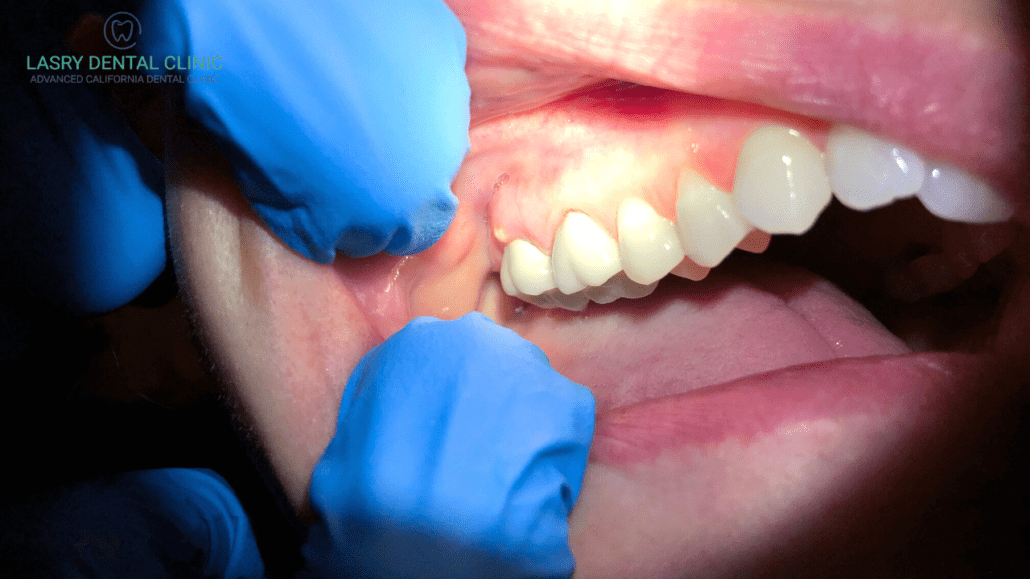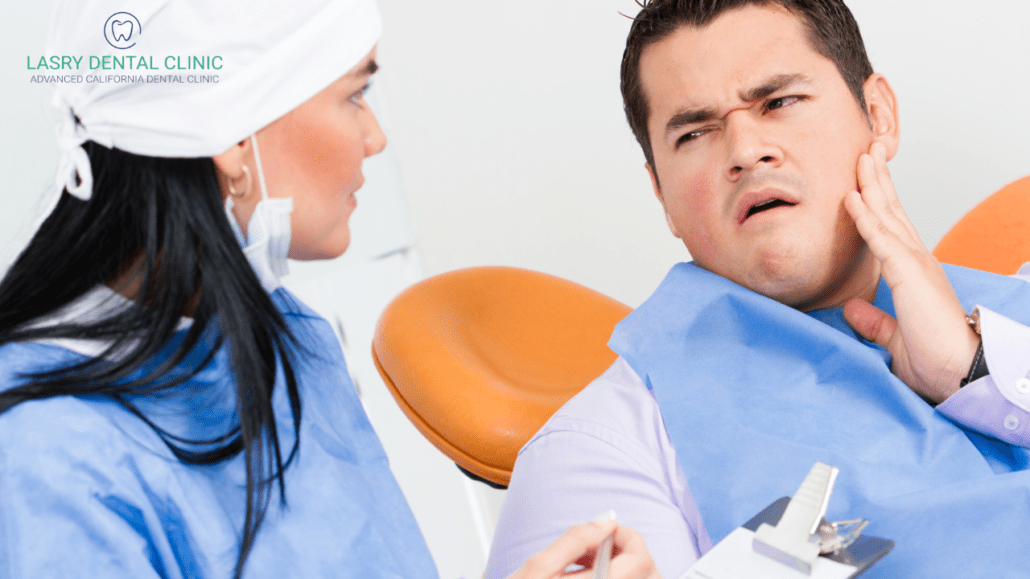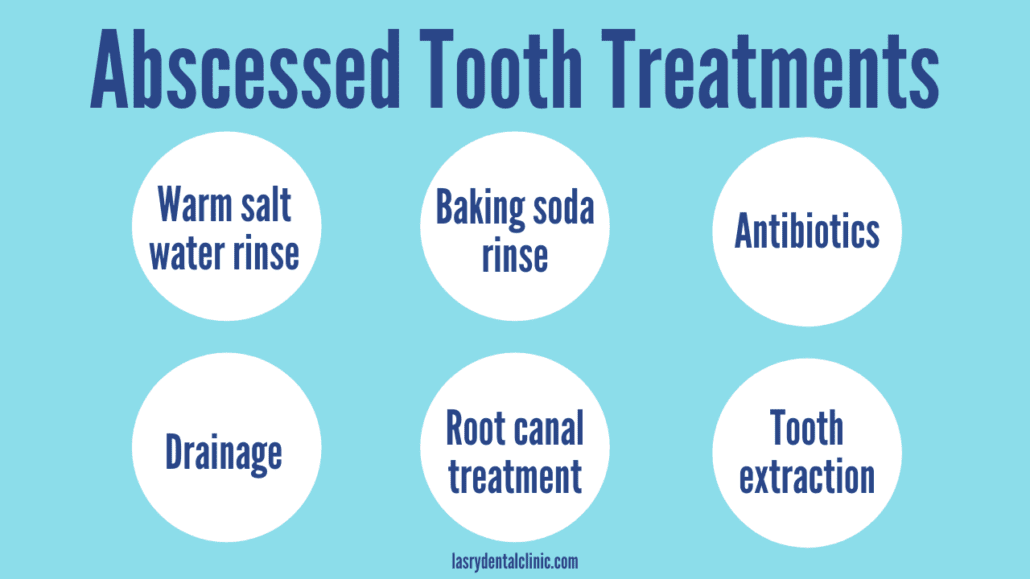What is an Abscessed Tooth? Here’s How You Can Treat It
An abscessed tooth can cause an immediate sense of panic. Rest assured that (more often than not) it’s not as bad as it looks!
But you will need to see your dentist.
Knowing your abscessed tooth cause and treatment options can help save your tooth. One of the most common causes of dental pain that creates a dental emergency is the delayed treatment of an abscessed tooth.
And despite the advances of modern dentistry, untreated tooth decay remains a common chronic condition among children and adults that often leads to multiple abscessed teeth.
RELATED: WHAT ARE THE SYMPTOMS OF A TOOTHACHE?
What is an Abscessed Tooth?
One common question we get asked a lot is, what does an abscessed tooth look like? You would expect a dramatic change in the appearance of an abscessed tooth, but this may not be true. Unless the tooth is severely fractured, it looks like a natural tooth.
However, the gum beside the tooth can swell and form a small or large pocket of pus (see picture above). Sometimes this pus will drain through the gum and appear as a small pimple. If the pus doesn’t drain, it can become larger and more painful if not treated.
And a severe infection can cause swelling of the jaw and face and become life-threatening if not treated quickly.
Abscessed Tooth Cause
An abscessed tooth cause and treatment differ depending on the type. There’s a gum abscess and a periodontal abscess, though both can cause similar symptoms.
A gum abscess begins outside the tooth, between the gum and bone. A periodontal abscess originates from within the tooth. Usually from a crack or break.
An abscess is essentially a pocket of puss, that your body creates when your gums or tooth is infected. The infection is usually found within the dental pulp.
The dental pulp is soft tissue composed of nerves and blood vessels found beneath the hard tissues (known as tooth enamel and dentin). When the dental pulp becomes infected with bacteria, pus forms and causes a tooth abscess.
The causes of an abscessed tooth include:
1. Tooth decay
Without eliminating tooth decay in the early stages, it can reach the dental pulp within the tooth. This introduces bacteria into the pulp and causes it to become infected. This can cause an abscess.
2. A deep crack in the tooth
A deep hairline crack provides a pathway for bacteria from your saliva to infect the pulp. The symptoms of a cracked tooth include pain when biting. The good news is, early treatment of this symptom can prevent an infected tooth!
3. Dental trauma
A blow to your face can impact the tooth and cause irreversible damage to the dental pulp. This is a common injury to front teeth, which we typically see in automobile accidents and sports. Trauma often causes a dark discoloration of the tooth.
4. Periodontal disease
Untreated gum inflammation leads to periodontal disease that exposes the tooth roots to your oral cavity. This can lead to damage and infection of the pulp.
RELATED: WHAT TO DO ABOUT CHIPPED TEETH
What Does an Abscessed Tooth Feel Like?
The onset of abscessed tooth symptoms can vary from sensitivity when eating hot food to a throbbing pain that wakes you up in the middle of the night.
Abscessed tooth pain can include:
Hot and cold sensitivity
Keep in mind, not all temperature sensitivity indicates an abscessed tooth. Many things can cause hot and cold sensitivity, including poor oral hygiene, acidic foods and beverages, biting on a hard object, a recent dental filling, and grinding or clenching your teeth.
Many times, this sensitivity resolves without treatment. However, persistent symptoms need evaluation by your dentist.
Pain
Your pain can range from mild or moderate to severe. It is not uncommon for an abscessed tooth to cause a constant, throbbing pain that radiates to other teeth, your ear, jaw, or even the temple of your head.
Pain when chewing or biting foods may indicate an abscessed tooth as well.
Swelling
Any swelling in your gums, jaw, or face needs evaluation as soon as possible by your dentist. Swelling from dental infections can spread quickly and create difficulty swallowing and breathing, which is a medical emergency.
Bad taste
Pus can drain from an abscessed tooth into your mouth and cause a persistent bad taste and foul odor.
Discolored tooth
This is most common in a front tooth that experienced trauma. The tooth usually turns grey, brown, or a dark reddish color. Frequently these teeth exhibit no other symptoms.
Fever
Any bacterial infection can cause a rise in body temperature, which is true for a tooth infection.
Tender lymph nodes
Oral infections can affect the lymph nodes in your neck and jaw. These swollen and painful areas need evaluation for a possible infected tooth.
RELATED: DENTAL CROWN: PRICE, PROCEDURE, AND OPTIONS
Abscessed Tooth Treatment
Getting to a dental professional skilled in treating an abscessed tooth as soon as possible is always your best option. Still, you also need to know abscessed tooth home remedy options until you see your dentist.
Home remedy treatments include:
1. Warm salt water rinse
Warm salt water can help relieve pain before dental treatment of your abscessed tooth. It can even promote healing after treatment.
Mix a teaspoon of salt with warm water, rinse, and try to keep the water around the affected tooth. When the water cools, spit the water out and repeat until you use the entire glass. Use this method three times daily.
2. Baking soda rinse
You can take advantage of the antiplaque and antibacterial properties of baking soda to help with your abscessed tooth.
Mix one tablespoon of baking soda and one glass of water. Rinse your mouth and spit out the solution. Repeat this until you use the entire glass. Repeat twice daily.
3. Over-the-counter pain medications
Always make sure you do not have a drug allergy before taking any medication. Over-the-counter analgesics such as ibuprofen, naproxen, aspirin, and acetaminophen can help alleviate your pain until you see your dentist. Always take these medications as recommended and do not exceed the daily recommended dose.
RELATED: HOW TO GET RID OF PLAQUE BUILDUP ON TEETH
As soon as possible, you need a professional evaluation to determine your abscessed tooth cause and treatment. An abscessed tooth will not improve without treatment by your dentist.
Treatments you can expect from your dentist may include:
1. Antibiotics
Severe infections, especially those causing fever, may require an antibiotic. Your dentist may prescribe amoxicillin, penicillin, or another antibiotic effective in treating oral infections. It is essential to take these as prescribed and complete the entire prescribed dosage.
2. Drainage
Some swellings require an incision in the soft tissue to allow the pus to drain (and relieve the pain).
3. Root canal treatment
Root canal treatment removes the infected dental pulp to allow healing of the infection. This is a safe and effective treatment for most abscessed teeth.
4. Tooth extraction
Occasionally an abscessed tooth requires removal to treat the infection.
RELATED: HOW MUCH DOES A TEETH CLEANING COST?
Can an Abscessed Tooth Be Saved?
Root canal treatment, also known as endodontics, makes it possible to save most abscessed teeth. Root canal treatments differ significantly today from those of the past. Today a root canal requires less time, and the experience is like getting a filling placed.
Your dentist can not save all abscessed teeth. This is usually due to:
- Deep decay can make it impossible to place a restoration on the tooth.
- A severe fracture can prevent saving the tooth.
- Extensive periodontal disease can destroy too much of the bony support of the tooth to save it.
- Some severe infections pose enough threat to make it advisable to remove the tooth.
After a thorough examination, your dentist will advise you on the best course of action to successfully treat your abscessed tooth. It is usually best to choose to save your tooth with a root canal treatment when given the option.
RELATED: ROOT CANAL PROCEDURE: WHAT TO EXPECT








Leave a Reply
Want to join the discussion?Feel free to contribute!